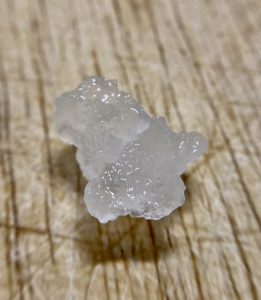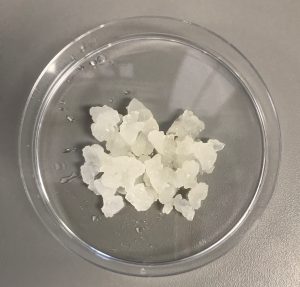
Water Kefir – A Multi-Omics Study – KKON 2023
Click Here -> Teagasc_Water Kefir Multi-Omics Study_Samuel Mortensen_KKON23* PDF This presentation will present the recent results from the multi-omics study of water kefir. From 69
By Samuel Mortensen, Postdoctoral Researcher
TEASAGC Food Research Center
Cork, Ireland
Water kefir, a delightful fermented beverage made with water kefir grains also known as tibicos, has been gaining popularity among health-conscious consumers. Its complex microbial community, consisting of primarily yeast, lactic acid bacteria, and acetic acid bacteria, plays a crucial role in determining the taste and quality of the final product. To help commercial water kefir producers enhance their fermentation process and achieve consistent flavor profiles, the De Vuyst group from Belgium conducted a study investigating the influence of water properties on fermentation characteristics1. In this article, we delve into their key findings and explore the implications for commercial water kefir production.
The study suggests that high buffer capacities in the water used for fermentation resulted in higher pH values, which could potentially yield a less sour beverage. High water buffer capacities were associated with higher residual total carbohydrate (sugar) concentrations and lower metabolite concentrations, indicative of a less strong fermentation process. Striking a balance between buffer capacity and fermentation strength is crucial to achieve the desired flavor profile, while still maintaining the characteristic tanginess and effervescence of water kefir. Producers aiming for a milder or stronger flavor profile may consider adjusting the buffer capacity of their.
Water Kefir Grains aka Tibicos


Interestingly, high calcium concentrations were found to lead to lower pH values. This suggests that higher calcium levels may contribute to stronger or faster fermentations. Producers seeking to optimize the efficiency and speed of their fermentation process may experiment with adjusting calcium concentrations accordingly.
The research demonstrated that insufficient water buffer capacity and calcium concentration led to a gradual decrease in water kefir grain growth over multiple backsloppings. Commercial producers should take note of the minimum thresholds for these parameters to ensure healthy and thriving kefir grain cultures, maintaining the long-term viability of their production.
The study revealed that high water buffer capacities resulted in a higher ratio of lactic acid bacteria to yeasts, resulting in higher molar ratios of lactic acid to ethanol and acetic acid to ethanol. Producers seeking to influence the dominant microbial species in their water kefir cultures can consider adjusting the water buffer capacity accordingly to encourage the growth of specific microorganisms.
Water kefir production is as much an art as it is a science, and understanding the nuances of the fermentation process is crucial for commercial producers aiming to create exceptional and consistent flavor profiles. The research conducted by the De Vuyst group sheds light on the influence of water properties, specifically buffer capacity and calcium concentration, on the microbial communities present in water kefir and their subsequent impact on fermentation characteristics. With these insights, producers can fine-tune their processes, to achieve desired flavor profiles. By striking the right balance between science and creativity, commercial water kefir producers can continue to captivate consumers with their delicious, microbe-rich creations.
1 Laureys, D., Aerts, M., Vandamme, P. & De Vuyst, L. The Buffer Capacity and Calcium Concentration of Water Influence the Microbial Species Diversity, Grain Growth, and Metabolite Production During Water Kefir Fermentation. Front Microbiol 10, 2876, doi:10.3389/fmicb.2019.02876 (2019).

Click Here -> Teagasc_Water Kefir Multi-Omics Study_Samuel Mortensen_KKON23* PDF This presentation will present the recent results from the multi-omics study of water kefir. From 69

Kasey Guelda, Key Beverages, Louisville, KY Q: When did you first discover kombucha? A: I discovered Kombucha 7 years ago! It’s actually a funny story,
No spam. We never sell your data. Update your preferences or unsub anytime.

Honey Islam, Mountain Bee Kombucha, Indiranagar, Bangalore Q: When did you first discover kombucha? A: I first encountered it in 2016 at an arts festival

Nicole Leon, Verde Sol, Belen, Costa Rica Q: When did you first discover kombucha? A: I first discovered kombucha 5 years ago. Q: Why did

Michele Vanlangenaeker, Wild Boocha Kombucha, Singapore Q: When did you first discover kombucha? A: In 2018 after my business partner discovered kombucha on a trip
Willie Kennon, Rogue Kombucha, Grants Pass, OR Q: When did you first discover kombucha? A: I started drinking kombucha around 2011 Q: Why did you